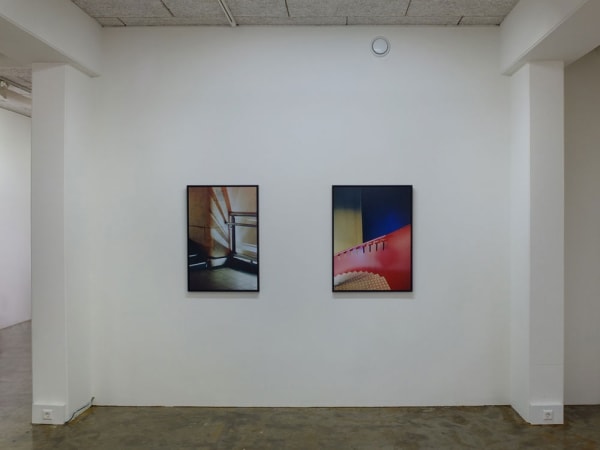Sander Meisner: Spatial Arrangements
Rutger Brandt is delighted to announce the opening show in the new space: Bethaniënstraat 39, Amsterdam. Please join us for the opening reception on Saturday, September 5, from 4 – 6pm.
For this special occasion the show will be opened at 5pm by Jop Ubbens, Chairman at Christie’s Amsterdam.
This opening exhibition will be a collaboration between Rutger Brandt Gallery and Seelevel Gallery in which we showcase new work by two photographers: Sander Meisner and Wouter Stelwagen.
Sander Meisner and Wouter Stelwagen are photographers in search of stillness, contemplation and beauty in urban landscapes, and both have a strong sense of geometry and composition which results in clean geometric forms and a powerful graphical quality of their work. They are fascinated by areas of the city, far away from civilization, on the twilight zone between city, industry and nature. Where Meisner finds his inspiration close to his hometown of Amsterdam, Stelwagen is fascinated by Asian megacities.
“Spatial arrangements” is an ongoing photographic interpretation of empty spaces and objects, which unintentionally become sculptures within our cities. The clean geometric forms of these unobserved spaces seem without personality, but when the abstract geometry of a wall of bricks, an industrial wasteland or an empty cinema are absent of the expected human activity, they become estranged from their purpose, and when photographed, are transformed into vibrant and pristine compositions of abstract and geometric shapes.
Sander Meisners work is highly dependent on the geometrical and spatial compositions he makes with the dark and the light, which he uses to create clean and a clear division of planes in his photographs. He uses these planes of light and shadow in such a way that certain parts of buildings are isolated from their surroundings. In this way he manages to create (semi-) abstract compositions in recognizable objects and buildings. In total abstraction there is no reference left to anything recognizable, but Sander Meisner manages to find a sublime balance in which the viewer can look at a concrete subject, but can also let the eye wonder away from the object and become exalted by what remains: shape and color.




